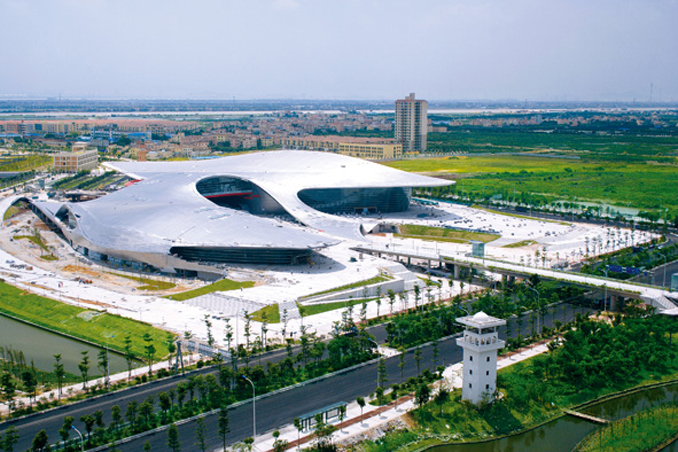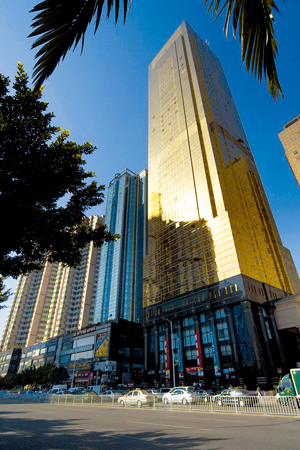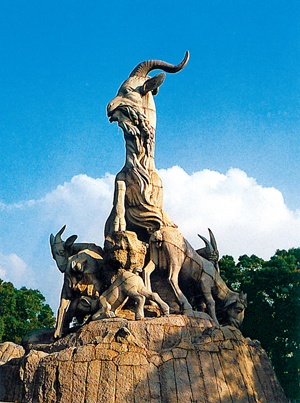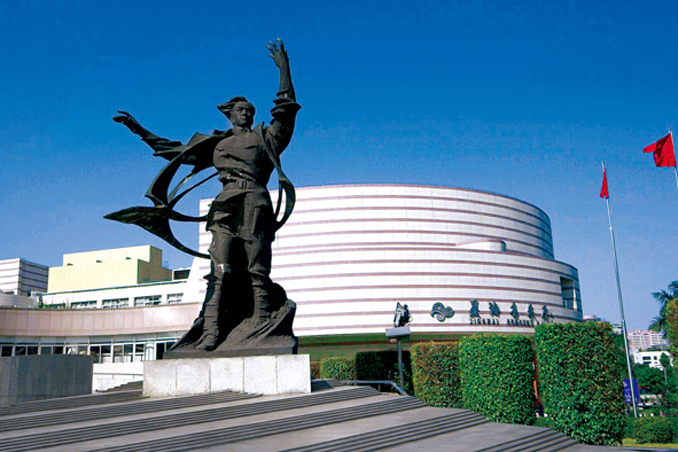
Written by: Li Li
Posted on: April 16, 2013 |  | 中文
| 中文
The Liede Bridge and the Canton Tower
Guangzhou, a famous cultural city of China, has a 2200 year old history. It is also known by the names “Yangcheng,” (a city of goats), “Suicheng,” (a city of wheat ears) and “Huacheng” (“a city of flowers”). This city was the starting point of the ancient Maritime Silk Road, and is now s port and foreign trade city known to the whole world. Today, Guangzhou is establishing itself as an international metropolis and is opening its unique culture to the world, a colourful amalgamation of the cultures of the rest of China and of other parts of the world.
 |
| Guangzhou Asian Games City |
Guangzhou, the capital city of Guangdong Province, China, is the political, economic, technological, educational, and cultural center of the province.
Located in South China on the Pearl River, Guangzhou has the two special administrative regions of Hong Kong and Macau as its neighbors. It is one of the most important navigation ports of the country as well as the pass on the Pearl River basin. Closely linked with the rest of China, Guangzhou also sits on the railway transportation hub and the civil aviation center of South China. The city is therefore called “the Gate of South China.”
 |
| Guangzhou streetscape |
Guangzhou got its name name in 226 A.D. The city is also known by the names “Yangcheng,” “Huicheng,” and “Huacheng,” and is blessed with blossoms all year round. It is said that around about 200 B.C., Guangzhou was ravaged by a plague that lasted for several years. The people were severely hit by famine. One day, five pieces of cloud emerged from the sky of the South China Sea in five colors, with each one carrying an immortal sitting on a goat, and each goat was carrying ears of grain. The immortals came to the city and blessed the city with abundant food. Then they disappeared, and the five goats turned into stones. Today, if you visit tje Yuexiu Park of Guangzhou, you will see the “five-goat” statue that depicts this legend.
Guangzhou is a thriving metropolitan city. It was once the starting point of the ancient Maritime Silk Road. It is now the famous port and foreign trade city that opened its gate earliest in the country, and has never shut it ever since, to the world. All these make it irreplaceable for the whole world.
Since 1998, Guangzhou has been continuously investing enormous amounts of money in the infrastructure of the city. The total investment of the four years (from 1998-2003) amounted to 60 billion yuan RMB. The subway system, the inner circumference highway system, the new Baiyun Airport, Guangzhou International Convention and Exhibition Center, Guangzhou Olympic Sports Center, etc., are the ones that demonstrate the city’s wishes and efforts to become an international metropolis.
Guangzhou is endowed with an open economy. Its total import-export value had reached 25.386 billion US dollars by November 2005; the value of both its import and export of the year exceeded 10 billion US dollars. The city has taken the initiative in cooperation with international companies with advanced technologies and managing experience, to benefit its automobile and IT industries. It has become a hot spot for foreign investment, largely by important international companies ranked among the world’s top 500 enterprises. 104 of them have established their branches and centers in Guangzhou.
 |
| Wuyang sculpture |
Guangzhou is also a city of culture. Every day, one can enjoy high-level performances in in concert halls and theatres across the city. The performances are given by groups from Hong Kong, Taiwan, other parts of China and from all over the world. Symphony, ballet, modern dance, music performance, as well as Chinese and Western operas find their way to the stages of the city. Shows of visual art, photography and historic relics are displayed one after another in exhibition halls and museums. Fashion shows, pop music concerts, and movies are waiting for viewers of all different tastes. All one needs is to take out time to enjoy this lavish cultural feast.
Guangzhou is also a city with a unique landscape. The Pearl River and its branches run through the city while dozens of lakes are scattered all around. The city enjoys a subtropical monsoon marine climate endowed with abundant sunshine and evergreen plants. In 2001, the city won the name of “the International Garden City.” Guangzhou people have been working hard to build an image of their city as being “people-oriented” and “nature friendly,” and to create a most career-friendly and livable landscape city in China.”
People living in other parts of China praise the people of Guangzhou as they look more handsome or pretty and happier than they are, and they believe that the beautiful environment of the city helps to mold the beautiful temperament of the people and to bring them a prosperous life, which in turn generates the delightful spirit they are known for.
Link:
Xian Xinghai, the “People’s Musician” from Guangzhou
Xian Xinghai is an extraordinary musician in modern Chinese music history. His musical works, together with film music of Nie Er--- another famous musician for motion picture scores, laid a foundation of modern Chinese film music. Xian died at the age of 40 because of a disease in a hospital in Moscow 1945.
In 1905, Xian Xinghai was born in a fisherman’s family in Panyu, Guangzhou. The boy was brought up by the folk songs on the Pearl River. He learnt, at a very young age, to perform the local folk tunes with a bamboo flute.
As a juvenile, Xian indulged himself in music learning, which guided him on tours to Beijing, Shanghai, and Paris. It was in 1935 when he graduated as a student of senior composition from Conservatoire de Paris and went back to China. Then it was in Shanghai that he started to produce the music pieces with Chinese features and spirit and to explore how to reflect the Chinese people's aspiration. In his music works, Xian expressed the anger and distress of the nation facing the invasion of China by the Japanese, and his great expectation of the survival of his motherland and fighting spirit of his people with the hope that his music could awake the nation. The anti-Japanese war time witnessed the births of Saving the Nation, On the Taihang Mountains, and many other highly praised works of this great patriot and musician.
 |
| Xinghai Concert Hall |
In 1938, Xian composed the epochal masterpiece Yellow River Cantata. It fully displayed the magnificence of the War of Resistance Against Japan and ardently praised the heroic Chinese people who were fighting for their liberation and freedom. The cantata was composed with forceful and majestic notes that may topple the mountains and overturn the seas. Both Mao Zedong and Zhou Enlai spoke highly of the cantata.
Xian departed to the Soviet Union in May 1940 to compose for the score of the documentary film Yan’an and the Eighth Route Army. Disrupted by the German invasion, Xian was stranded in Alma-Ata, Kazakhstan. Under the difficult circumstances he composed the symphonies Liberation of the Nation (“The First Symphony”) and Sacred War (“The Second Symphony”), the suites Red All Over the River, the symphonic poem Aman Garda, and arias for ancient Chinese lyrics. Today, in the city of Alma-Ata, a street is named after him --- Xian Xinghai Avenue. In July of 1998, during his visit to Kazakhstan, Jiang Zeming, the former Chinese leader, wrote an inscription for the former residence of Xian, “The roaring of the Yellow river is whispering Xinghai's name while the friendship is glowing in the blossoms of our two neighboring countries.”
In 1983, a memorial mausoleum was built for Xian on the bank of Luhu Lake, next to the Baiyun Mountain in Guangzhou. People of Guangzhou brought Xian’s remains back to his hometown to express their love and memory of this “People’s Musician.”
You may also like: